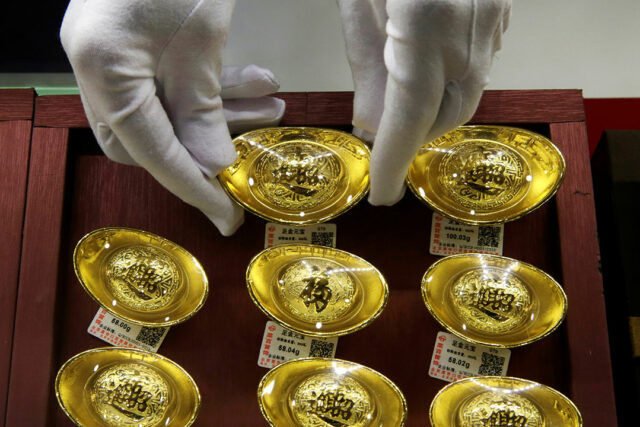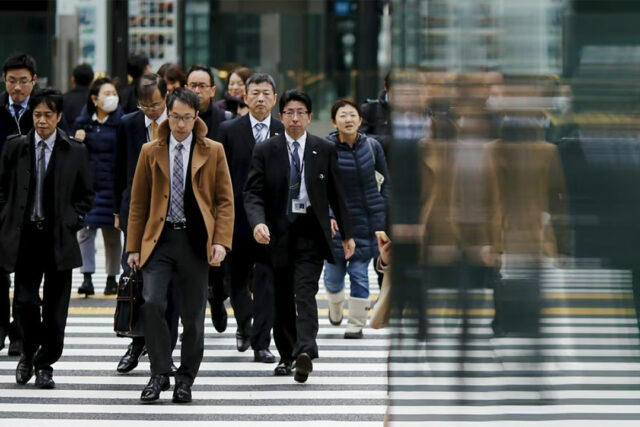BRUSSELS – Low pay, few labor rights and dangerous working conditions – for millions of European gig workers, it can be a rough job. But a deal thrashed out by EU ministers this week addresses one of their biggest headaches – management by algorithm.
Drivers and delivery riders for online platforms such as Uber and Deliveroo say the opaque nature of algorithmic management tools can result in random job assignments and performance ratings, and even account deactivation – hitting their earnings and morale.
While Monday‘s watered-down deal to boost gig workers‘ employment rights fell short of unions’ demands, they hailed the Platform Work Directive‘s provisions for greater transparency over algorithmic management systems as a crucial step to protect European workers from machine-made decisions.
The draft rules should act as a “wake-up call” over the risks of artificial intelligence (AI) turning Europe into a “wild west” for workers’ rights, Jonathan L’Utile Chevallier, who coordinates a delivery riders’ cooperative in the French city of Bordeaux, told the Thomson Reuters Foundation.
Under the new rules, automated decisions affecting working conditions must have some human oversight, and workers would have access to the information driving AI-powered decisions. Such provisions complement parts of the landmark EU AI Act endorsed by European lawmakers on Wednesday.
By guaranteeing greater transparency over algorithmic decisions, workers’ and labor advocates will be able to establish whether structural injustices such as racial or gender bias are baked into the code used to allocate jobs or evaluate performance.
That information could be used in potential lawsuits challenging discrimination or other labor rights infringements, said Oguz Alyanak, a researcher at Fairwork, a gig research project at Britain’s Oxford Internet Institute.
“This is a big step,” Mr. Alyanak said.
AI’S WORKPLACE REVOLUTION
Algorithmic management is not limited to gig work, as artificial intelligence (AI) begins to revolutionize the workplace – increasingly used as a tool to monitor workers performance and taking over tasks previously carried out by humans.
The boom in the technology that started in 2022 could replace 300 million full-time jobs – approximately 18% of work globally, according to Goldman Sachs.
Some companies are also embracing automation in the hiring process, including resume screeners that scan applicants’ submissions, assessment tools that grade an online test, and facial or emotion recognition tools that can analyze a video interview.
The draft EU rules are the first attempt at regulating the impact of algorithmic management for Europe’s roughly 28 million gig workers, and set the standard for future legislation, union leaders said.
“This directive is the antidote to uberisation,” said Brahim Ben Ali, a former Uber driver and secretary-general of the INV union in France who has been pushing for the EU rules since 2019.
“It’s important to recognize the work of working-class communities in achieving something so monumental,” he added.
Move EU, a Europe-based group representing ride-hailing companies, declined to comment on the draft EU rules. Delivery Platforms Europe, which represent food delivery firms, did not immediately reply to requests for comment.
‘BITTERSWEET VICTORY‘
Still, Monday’s provisional deal on the directive – which focused primarily on recognizing gig workers as employees with rights including sick pay, pensions and unemployment benefits, was “a bittersweet victory”, said L’Utile Chevallier.
It fell short of unions’ hopes and scrapped a set of criteria proposed by the European Commission to determine if an online company is an employer.
Instead national law, collective agreements and case law will dictate whether a worker is an employee, in effect maintaining the status quo. The burden of proof will be on companies to show that their gig workers are not employees.
“It’s not the deal we wanted,” said Livia Spera, general secretary of the European Transport Workers Federation, adding that workers would have benefited more from EU-wide employment criteria.
By leaving the details up to each member state, the risk is that gig workers in one country may end up with tougher employment criteria than in another.
Once endorsed by a final vote in the European Parliament, the countries generally have up to two years to transpose the directive into national law, and unions vowed to maintain their pressure for greater social and labor rights.
“This is a long fight,” said Felipe Corredor Alvarez, a former Deliveroo rider in Barcelona and member of the RidersXDerechos (Riders for Rights), saying gig workers would now shift their attention to laws in individual countries.
“We have a long road ahead of us,” he said. – Reuters












